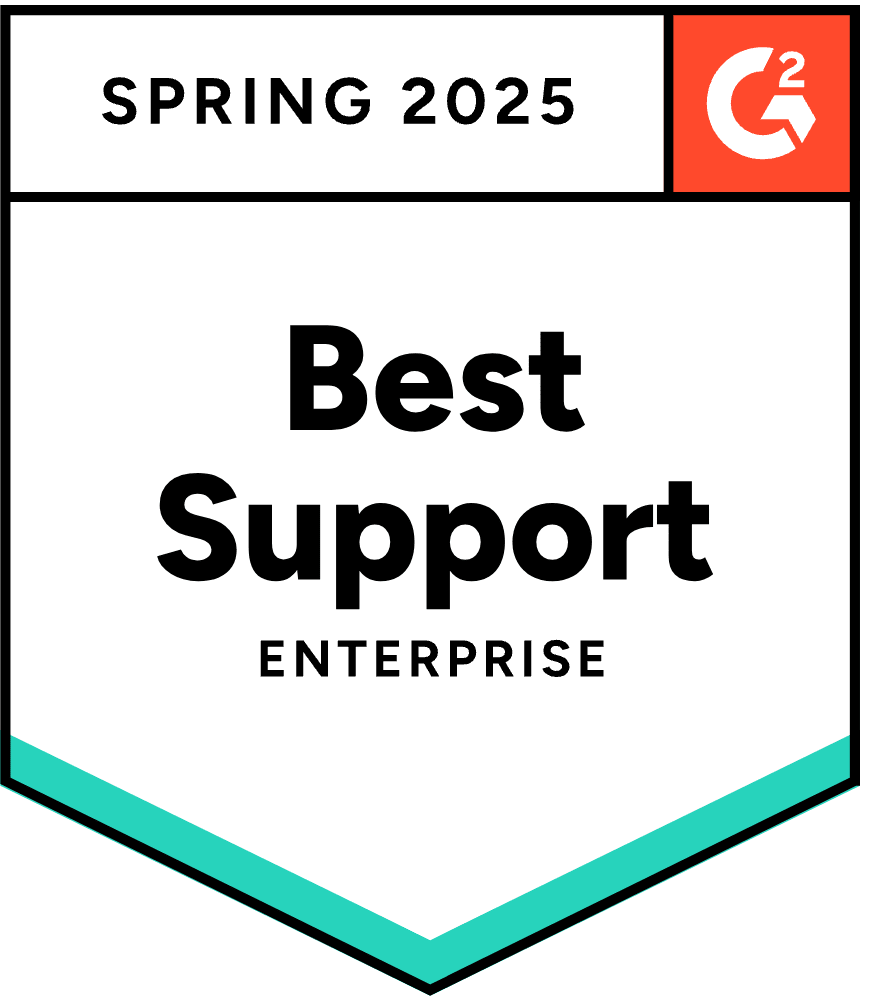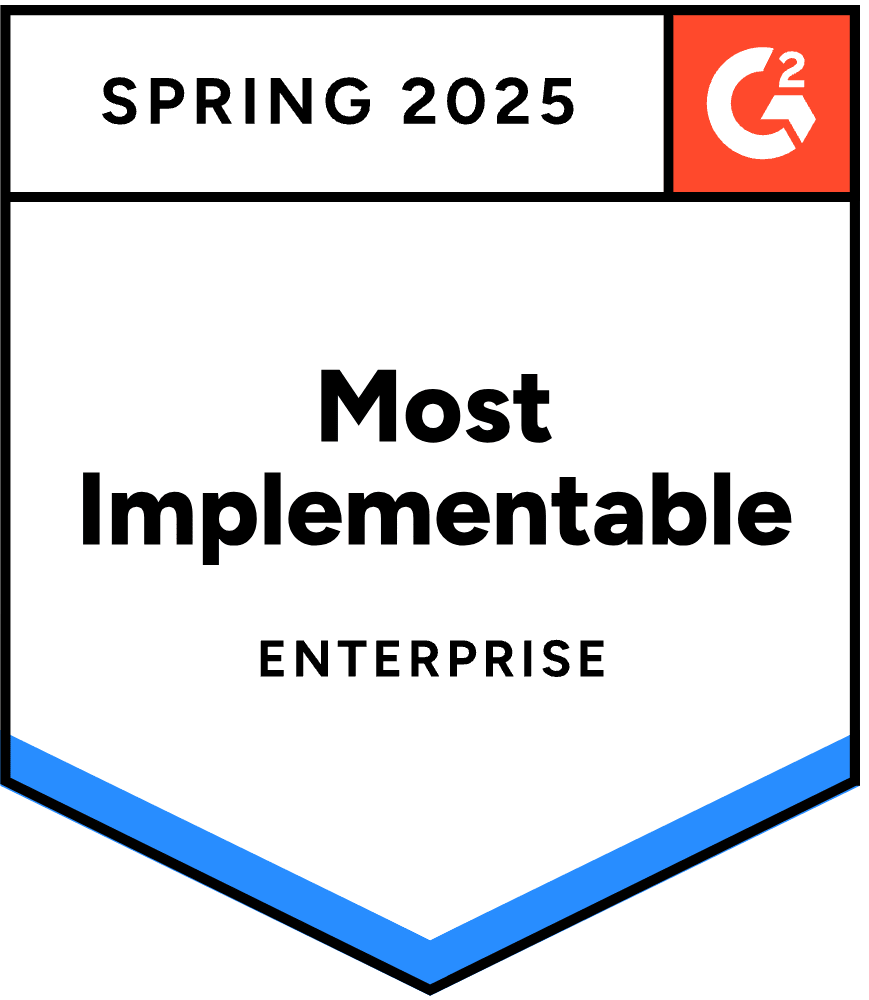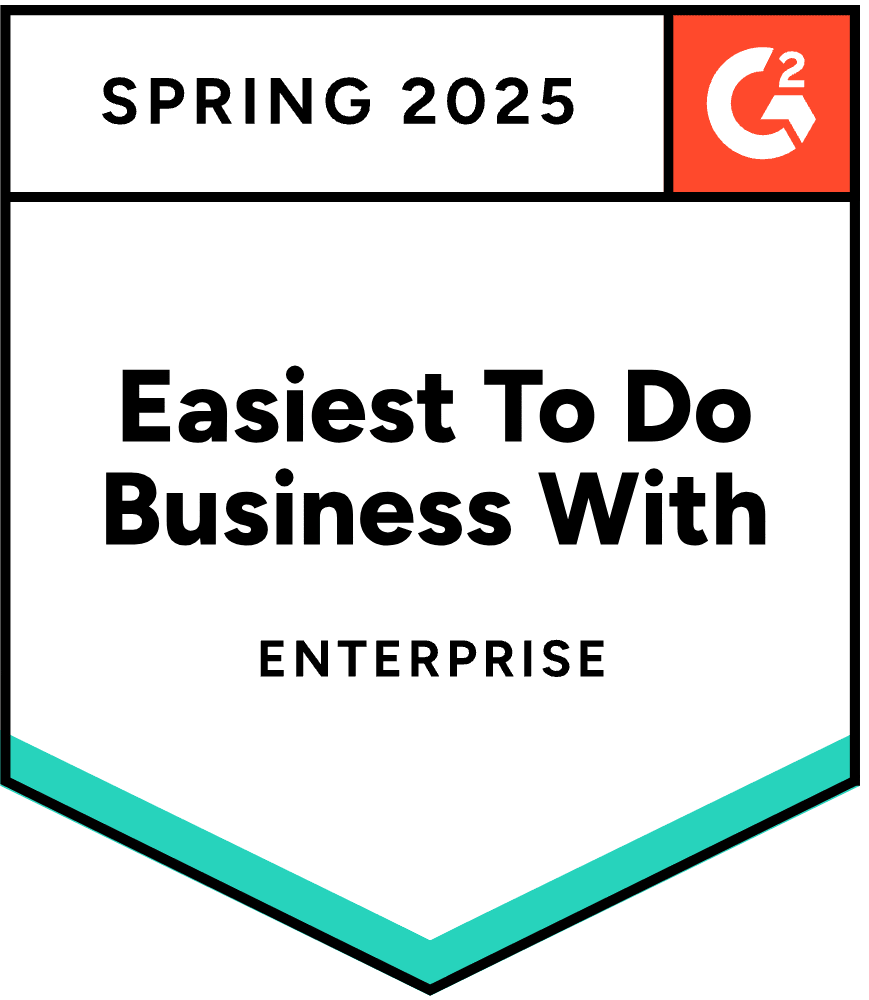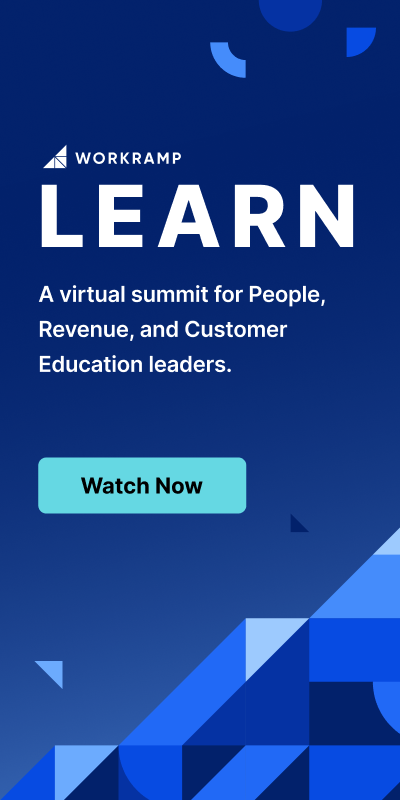9 Examples of Employee Development Plans to Uplevel Your Team
Anna Spooner | WorkRamp Contributor
View bioLearning Tips Straight to Your Inbox
Investing in professional development is one of the best ways to keep team members engaged and motivated. Employee development also helps you create a culture of learning and growth to attract and retain top talent.
Almost half (48 percent) of workers agree that employee training opportunities were a factor in choosing their current company, according to a research report from SHRM. The report also revealed that 76 percent of employees say they’re more likely to stay with a company that offers continuous training.
By creating excellent employee development plans, you give team members a chance to reach their full potential—and show them their success is a priority in your organization.
Here are some examples of employee development plans you can use to unleash your team’s potential, hit your goals, and improve your bottom line.
In this post:
Examples of employee development plans
These employee development plan examples can be used to help team members pursue their personal and professional aspirations.
- Employee-chosen skill development plan
- Career development plan
- Leadership skills development plan
- Skill gap-focused development plan
- Employee development plan based on team objectives
- Employee development to discovering a career goal or focus
- Cross-functional employee development
- Job enrichment development plan
- Succession planning development plan
Employee-chosen skill development plan
Many employees recognize that they need to improve their skills so they can do better in their current position. Managers can help by creating a development plan focused on the skills the individual wants to work on.
How to make a development plan for employee-chosen skills
You can create an online or printed worksheet with basic information (employee name, number, manager, and current date.)
From there, list the skills employees need and rate them on a proficiency scale. You can test team members or combine self-assessments with management assessments.
Finally, pick a maximum of three skills to focus on improving. Then, you can include a training plan for developing those skills, including in-house resources, specific reading, coaching, and more. Encourage team members to set a target date for completing the action plan for each skill.
Factors to consider when developing employee-chosen skills
It’s essential to be honest about employees’ proficiencies without discouraging them. Then, once you have the proficiency ratings, you can focus on the areas where they have the most potential to improve.
Don’t choose too many skills simultaneously—we recommend three or fewer. However, three skills per quarter add up to 12 improved skills yearly.
Pay attention to the importance of practice, as well. Assigning projects or tasks focusing on employees’ targeted skills can solidify them in real-life scenarios.
Desired results
Ideally, the individuals will improve their proficiency in the targeted skills and overall performance. At that point, they can continue with other skills necessary for their role.
This may allow them to win promotions. If the employee decides to change their goals or pursue another role within the organization, you can use one of the other development plans in this guide.
Career development plan
Many employees have a professional goal that involves moving into a different role in the organization, and they may need help developing the necessary skills. Managers can support them by creating a professional development plan specific to their aspirations.
Read More: 6 Effective Ways to Support Employee Career Growth
How to create a career development plan
This development plan focuses on the core skills for a specific position. Like the first plan, you’ll want to list the necessary skills and assess your team members’ proficiencies.
Remember, choose up to three skills to focus on, and create action steps so they can gain experience.
You’ll also want to create opportunities for team members to experience the role indirectly so they can understand the day-to-day work. For example, work with the manager in the target department to set up job shadowing, informational interviews, or other opportunities for employees to get first-hand experience.
Factors to consider in a career development plan
Taking on a new role involves two factors:
- The necessary skills
- The right fit
Skill development is generally straightforward, but assessing fit can take more work.
Allowing team members to interview or shadow people in desired roles can help determine fit. Managers can also candidly discuss work styles and how well employees’ strengths match particular positions.
Consider hard and soft skills when creating career development plans. Hard skills, like software or processes, are often easier to master than soft skills like communication, motivating others, and strategic planning.
Desired results
There are two ideal outcomes for an employee development plan. The first is that the team member develops the skills, learns about the new role and responsibilities, and takes on the new position.
The second outcome is also positive, although it may not seem like it. In this case, an employee may realize they’re not a good fit for the role and instead set their sights on something else.
Still, this is better than having someone in a position they don’t enjoy and may not excel in.
Leadership skills development plan
Employee development plans are helpful for new and existing leaders. But, shockingly, 59 percent of those managing one or two people and 41 percent managing up to five employees have yet to receive leadership training.
Read More: What is Leadership Development and Why is it Important?
How to create an employee development plan for leadership skills
Leadership roles are unique because they involve more soft skills like communication and motivation. Unfortunately, this often means leadership skills can take more work to develop and measure.
To create an employee development plan for leadership, list skills, and assess employees’ proficiency.
Which skills are most important?
Be sure to consider:
- Performance management and corrective action
- Having tough conversations
- Coaching and employee growth
- Motivating teams and employees
- Conflict resolution
- Delegation and time management
- Communication, both written and verbal
- Promoting teamwork
Once employees choose skills to focus on, you can use various learning methods like coaching, role-playing, shadowing, and more to help them improve.
Factors to consider when creating leadership development plans
One of the things that makes an employee development plan for leadership different is that you rely less on traditional books or online learning. Many of these skills are relational, which means they require practice.
Shadowing managers, interviewing leaders, practicing challenging conversations, and more help develop leadership skills. Of course, reading and eLearning are useful too, but only with the other elements.
Read More: Proven Strategies to Design Leadership Development Training That Works
Desired results
The desired result is that employees improve their leadership skills and demonstrate stronger leadership abilities.
Alternatively, employees may decide the required skills differ from their strengths or prefer doing hands-on work rather than leading others. These learnings are valuable to ensure employees are in the correct positions for their skills and interests.
Skill gap-focused development plan
Some development plans are focused are skills the employees suggest that they want to learn, but skill gap-focused development plans are focused on ensuring your team develops the skills the organization needs addressed.
An incredible 87 percent of companies say they have skill gaps now or expect to within the next few years. Addressing these gaps with targeted employee development plans is essential.
Read More: Close the Skills Gap: Empower Your Team For an Unpredictable Future
How to create a skill gap employee development plan
The first step to filling skill gaps is to know where your organization falls short. Start by Identifying the skills that your organization needs to meet current and future challenges and which departments most need particular skills.
Next, assess target departments based on the skills they need and see where the teams fall short. Finally, each manager can create a plan to upskill their team in the target areas to improve performance and create a future-ready workforce.
Factors to consider when creating skill gap development plans
A skill gap development plan is based on what needs the organization sees when looking into the current and future state of the market. As a result, the skills each team is asked to develop should make sense, but employees may need to be sold on the benefits of becoming strong in these areas.
When employees don’t choose the skills, but the organization does, educating employees about the purpose of the training and why these skills matter can increase buy-in and make the development plan far more successful.
Read more: Close the Skills Gap: Empower Your Team for an Unpredictable Future
Desired results
Done correctly, skill gap development plans will help ensure that your organization’s teams have the skills they need to address the way the market is changing so that your company has no problem staying nimble, innovative, and profitable.
The larger skill gaps get, the harder they are to address. As a result, it’s a good idea to have skill gap development plans consistently in play so the company stays on top of skill development and employees embrace a learning culture.
Employee development based on team objectives
This type of development plan is based on the specific goals of the team, which fits into the organization’s goals but is separate from them. In a sense, this is skill gap development at a smaller scale, carried out by the team or department manager.
Read more: 6 Skill Development Tactics for Successful Teams
How to create an employee development plan based on team objectives
The department or team manager knows what their teams are expected to do based on their own job goals and evaluations. Helping their teams achieve these objectives helps everyone—the employee, manager, and the company.
The first step is to understand what objectives the team or department is struggling with the most. Then, determine what skills team members need to achieve those objectives and assess those skills.
Once the manager knows who needs help in what areas, they can create employee development plans to build those skills and improve department and team performance.
Things to consider when creating team objective skill development plans
One of the most important things to keep in mind is that communication with team members is essential. Help everyone feel they are growing and improving rather than framing the training as a response to failure. Also, make sure each employee understands the importance of each skill and how it relates to their team’s role in the organization.
Having a learning culture is one of the most important ways to encourage ongoing improvement and buy-in when it comes to manager- or organization-led skill development. When everyone expects to grow and learn, developing new skills won’t be met with resistance.
Desired results
Much like skill gap development plans, the desired result of a team objective skill development plan is that team members will improve in crucial areas and overall team performance will benefit. Also, it helps the team be a key part of the company’s success.
Development to discover a career goal or focus
Any manager who has worked on employee development knows some team members may need clarification on their career goals or aspirations. That doesn’t mean you can’t create employee development plans; it just means the focus will be more exploratory.
How to create a development plan to discover a career goal
This type of employee growth plan aims to help employees understand their options while also uncovering their strengths and talents.
Start with self-discovery. You may assign one or more assessments, such as Clifton StrengthsFinder, an emotional intelligence assessment, personality tests, and more. You can also have team members ask colleagues what strengths they observe in their work.
Next, assign action steps to help employees understand available opportunities. These could include meetings with managers in other departments, job shadowing opportunities, informational interviews, and reviewing your company’s career tracks.
Through this process, employees can find a match based on their skills and interests and set their sights on advancement.
Factors to consider when creating a development plan to discover a career direction
As a manager, keeping this development plan focused on the end goal—choosing a career path within your organization–is essential.
You can set specific deadlines to complete assessments and have meetings to discuss the results. Ensure to follow up regularly to learn what employees liked and what wasn’t a great fit.
Desired results
Ultimately, you want team members to choose a career path to work toward within your organization.
Once they choose a goal, you can use the appropriate employee development plan to help them achieve the desired outcome.
Cross-functional employee development
A cross-functional employee development plan helps broaden an employee’s perspective and skill set by allowing them to experience different departments and roles. The experience creates a holistic view of the organization and can be helpful for leadership roles at higher levels that require a more comprehensive understanding of the company.
How to create a cross-functional employee development plan
Creating a cross-functional development plan is unique because it requires coordination with other departments and leaders. However, there are common types of cross-functional opportunities that you can often arrange for the employee.
A cross-functional development plan may include:
- Short-term rotations in another department
- Participating in projects that include multiple departments or stakeholders
- Being part of brainstorming and ideation sessions in other departments
- Job shadowing
- Mentorship
To help ensure the employee is gaining perspective, it may be helpful to have assessments or reports where the employee shares what they’ve learned and how they’d apply that in other situations.
Factors to consider when creating a cross-functional development plan
One of the toughest parts of cross-functional development is evaluating the employee’s progress. It can be hard to come up with quantitative measurements, and qualitative evaluations can be too vague to act on.
Be sure to work with everyone involved in the development plan to ensure feedback is specific and actionable. Also, get feedback from the employee about the experience, and use that to create specific and actionable comments for the mentors and other participants.
Desired results
The goal of a cross-functional employee development plan is to help employees get a broader view of the organization and understand what skills they might need to move up in the company. This can be helpful for potential executives and for team members who are curious about different career paths.
Job enrichment development plan
This employee development plan focuses on re-engaging and motivating employees who may be flagging or interested in expanding their roles.
Job enrichment adds variety and meaning to existing positions while continuing to focus on the organization’s needs, which can improve employee retention and engagement.
How to create an employee development plan for job enrichment
Creating an enrichment plan starts with understanding what employees like and dislike in their current roles. Ask them to make a list so you can see which aspects cause problems and which ones are enjoyable.
Separately, list department and/or team goals. Think about how these goals tie into your organization’s mission.
Finally, work with team members to determine changes to improve motivation and their sense of meaning and belonging. Some employees benefit from increased autonomy, and others from variety. Everyone enjoys feeling like their work is connected to a greater purpose, so aligning their role to the company’s business goals is essential.
Read More: 7 Things Employees Want From Employers
Things to consider when creating a development plan for job enrichment
The employee development plan will include the necessary steps for job enrichment and the date it will be completed. In addition, there may be substeps where employees can gain skills or certifications to take on different types of work.
It’s vital to focus on enrichment that will motivate employees and help them enjoy their roles. Adding more work to employees’ plates is not enrichment. Instead, enrichment is intentional and focused.
Desired results
An employee development plan focusing on job enrichment can increase employee engagement and morale, reduce turnover, and boost job satisfaction.
Succession planning development plan
Succession planning is a significant concern for most organizations. In one survey, 33 percent of HR leaders reported struggling to develop effective senior leaders, and 45 percent struggled to develop effective midlevel leaders.
A succession planning development plan is about identifying high-quality leaders in the company and preparing them to succeed at higher levels in the organization.
How to create a succession plan development plan
A succession plan development plan is focused on teacher leadership skills and preparing employees to guide the organization at a high level. As a result, you’ll see elements of both the leadership development plan and the cross-functional development plan.
Each potential leader should be assessed on key leadership skills, such as communication, coaching, change management, motivating teams and employees, conflict resolution, delegation, and time management.
Also, employees with a succession plan development plan should be exposed to different projects and company departments so they can fully understand the dynamics of the company and what it takes for the organization to be successful.
Activities in the plan might include leadership skill training in areas where the employee is weaker, rotations in different departments, participation in projects with a variety of stakeholders, job shadowing, and mentoring.
Things to consider with succession development plans
One of the common problems in company leadership is that promotion decisions are sometimes made based on emotions or unconscious biases instead of true effectiveness and capability.
Part of succession development in a company that truly wants to excel is helping existing decision-makers understand bias and emotional decision-making so they can make the best decisions.
Also, as with cross-functional development plans, it’s important to ensure feedback is specific and actionable, even if it’s qualitative.
Desired results
The desired result of succession development plans is to have mid-level leaders who are well-prepared to become higher-level leaders when the opportunity arises. This helps retain high-quality employees by giving them a chance to grow in their careers while also creating ongoing opportunities for employees below them.
Employee development is a win-win
There’s no doubt that employee development benefits team members and your organization. It’s the perfect win-win—you get better-qualified workers, and employees can advance their careers.
Creating a solid employee development program requires the proper foundation. An All-in-One Learning Platform like WorkRamp can help you develop a culture of learning and deliver effective, engaging learning and development programs to help your team members thrive.
Ready to learn more? Contact us for a free, personalized demo.
Complete the form for a custom demo.
Recent Posts
- Top LMS Integrations That Power Smarter, Faster Learning July 2, 2025
- Introducing WorkRamp Analytics Studio: Unlocking Your Data Insights with AI June 30, 2025
- 11 AI LMS for AI-Powered Learning June 27, 2025
- The Best LMS Platforms for Customer Retention (2025 Guide) June 27, 2025
- 11 Best AI Learning Platforms June 16, 2025
Anna Spooner
WorkRamp ContributorAnna Spooner is a digital strategist and marketer with over 11 years of experience. She writes content for various industries, including SaaS, medical and personal insurance, healthcare, education, marketing, and business. She enjoys the process of putting words around a company’s vision and is an expert at making complex ideas approachable and encouraging an audience to take action.
You might also like
What are the benefits of online learning?
When it comes to professional development and continued learning, online courses and programs offer several advantages over traditional in-person options.
Read More
Try these strategies to improve employee engagement and performance
Companies with strong cultures see greater employee engagement and increased productivity. Learn to create a culture that promotes growth, helps you retain top talent, and drives results.
Read More
Discover how increasing your L&D budget benefits your team and your organization
Your team is your greatest asset, and investing in their learning and development benefits your business.
Read More
Decrease Ramp Time and Increase Revenue
Get in touch to learn how WorkRamp can help you achieve your learning and development goals.
Request a Demo





